https://www.youtube.com/watch?v=jEFr5RCjIAA
https://www.youtube.com/watch?v=jEFr5RCjIAA
Rafia Zakaria in The Baffler:
![]() This series is devoted to reporting on the experience of doctors at the frontlines of the battle against coronavirus, as we approach what are likely to be some of the deadliest weeks in the history of the United States. Though their identities are known to the editors, the doctors interviewed will remain anonymous so that they do not face repercussions for sharing frank truths about practicing medicine in the midst of this crisis.
This series is devoted to reporting on the experience of doctors at the frontlines of the battle against coronavirus, as we approach what are likely to be some of the deadliest weeks in the history of the United States. Though their identities are known to the editors, the doctors interviewed will remain anonymous so that they do not face repercussions for sharing frank truths about practicing medicine in the midst of this crisis.
ON SUNDAY, MARCH 29, Dr. L[*] walked home in the dark after her shift at a New York hospital ended. The city felt uneasy, as if about to erupt in defiance of the imposed desolation keeping streets empty and noise limited to the unending wail of ambulance sirens. Dr. L lived close to the hospital, but on this dark and silent night, the two blocks seemed longer than ever. In the days that had just passed, the hospital, almost all of which is now devoted to treating COVID-19 patients, had transitioned from anticipating the storm to being in the thick of it; Dr. L had overseen the conversion of more and more floors to COVID-19 floors. As the familiar hospital she and her colleagues knew transformed into a battlefield, they had begun to have the sort of conversations that had been unimaginable just a few weeks ago.
Dr. L recalled overhearing two nurses at a nursing station discussing imminent ventilator shortages. “Who would you save?” one nurse asked the other, “if you had one ventilator and had to choose between a young thirty-five-year-old or a seventy-year-old?” The second nurse didn’t answer. Looking at both, Dr. L interjected. “The hard choices are not going to be between a thirty-five-year-old and a seventy-year-old,” she said, “they’re going to be when you have to choose between a single thirty-year-old male and a forty-five-year-old male with three children.” The nurses just stared at her silently; the idea that they—health workers, nurses and doctors who had sworn to preserve life—would be deciding the value of one life against another still seemed abstract. Dr. L thought about this conversation as she walked into her dark apartment, switching on the light. She was exhausted, but sleep seemed distant, only a theoretical possibility. She turned on the TV in her bedroom and the never-ending news loop began. The president had given a press conference earlier that day; now CNN was playing clips of it. Trump asked if the masks being sent to New York hospitals were “going out the back door.”
More here.
Rebecca Spang in The Atlantic:
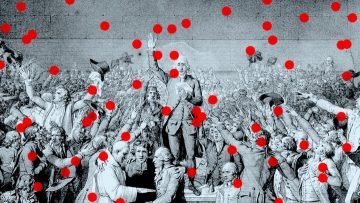 Fear sweeps the land. Many businesses collapse. Some huge fortunes are made. Panicked consumers stockpile paper, food, and weapons. The government’s reaction is inconsistent and ineffectual. Ordinary commerce grinds to a halt; investors can find no safe assets. Political factionalism grows more intense. Everything falls apart. This was all as true of revolutionary France in 1789 and 1790 as it is of the United States today. Are we at the beginning of a revolution that has yet to be named? Do we want to be? That we are on the verge of a major transformation seems obvious. The onset of the next Depression, a challenge akin to World War II, a national midlife crisis—these comparisons have been offered and many more. But few are calling our current moment a revolution, and some have suggested that the coronavirus pandemic—coinciding as it has with the surge in Joe Biden’s bid for the Democratic presidential nomination and the decline of Bernie Sanders’s—marks the end of any such possibility. “The Coronavirus Killed the Revolution,” declared the headline of a recent essay in The Atlantic by Shadi Hamid, who argued that the COVID-19 crisis makes people crave “normalcy” over deep structural change. As a historian of 18th- and 19th-century France, I think claims like these are mistaken.
Fear sweeps the land. Many businesses collapse. Some huge fortunes are made. Panicked consumers stockpile paper, food, and weapons. The government’s reaction is inconsistent and ineffectual. Ordinary commerce grinds to a halt; investors can find no safe assets. Political factionalism grows more intense. Everything falls apart. This was all as true of revolutionary France in 1789 and 1790 as it is of the United States today. Are we at the beginning of a revolution that has yet to be named? Do we want to be? That we are on the verge of a major transformation seems obvious. The onset of the next Depression, a challenge akin to World War II, a national midlife crisis—these comparisons have been offered and many more. But few are calling our current moment a revolution, and some have suggested that the coronavirus pandemic—coinciding as it has with the surge in Joe Biden’s bid for the Democratic presidential nomination and the decline of Bernie Sanders’s—marks the end of any such possibility. “The Coronavirus Killed the Revolution,” declared the headline of a recent essay in The Atlantic by Shadi Hamid, who argued that the COVID-19 crisis makes people crave “normalcy” over deep structural change. As a historian of 18th- and 19th-century France, I think claims like these are mistaken.
The United States may not be having a revolution right now, but we are surely living in revolutionary times. If we do not perceive them as such, it is because news coverage and everyday conversations alike turn on nonhuman agents. Instead of visionary leaders or outraged crowds, viruses, markets, and climate change seem to shape events today. History feels like it is out of our hands. People sometimes imagine yesterday’s revolutions as planned and carried out by self-conscious revolutionaries, but this has rarely, if ever, been the case. Instead, revolutions are periods in which social actors with different agendas (peasants stealing rabbits, city dwellers sacking tollbooths, lawmakers writing a constitution, anxious Parisians looking for weapons at the Bastille Fortress) become fused into a more or less stable constellation. The most timeless and emancipatory lesson of the French Revolution is that people make history. Likewise, the actions we take and the choices we make today will shape both what future we get and what we remember of the past.
More here.
 Over at the NYRB Blog, Ali Bhutto, Jamie Quatro, Edward Stephens, Carl Elliott, and Liza Batkin, et al.:
Over at the NYRB Blog, Ali Bhutto, Jamie Quatro, Edward Stephens, Carl Elliott, and Liza Batkin, et al.:
[Liza Batkin] A few weeks ago (which feel like years), my boyfriend showed me a video of the British comedian Steve Coogan in his Alan Partridge character, demonstrating how to “complete an ablution, entry to exit, without using your hands.” “Drop a thigh,” Patridge begins, bending his leg, then “elbow down to open,” as he clasps his hands and dips his right arm to the phantom door handle. He continues to narrate unusually graceful movements, popping his hip to open the door, spinning on left foot to face the “toilet,” lifting its seat with his right one, and so on.
“It’s funny to imagine getting so good at something so odd,” I think of saying, but stop myself from explaining the joke. It does seem impossible to ever adjust to the awkwardness of avoiding stray particles.
The routine reminds me of my favorite clip of the choreographer Bill T. Jones performing, initially, a short dance phrase, and then the same phrase while describing each movement in as much detail as possible. What was at first marvelously fluid becomes slower and belabored, though still beautiful, as Jones struggles to account for his body’s actions. “As one shifts one’s hip onto the left leg, the left arm breaks over the head, the right leg comes in and proceeds up to a passé parallel position,” he says, as his typically steady leg wobbles uncharacteristically. The task of carefully thinking about what he’s doing appears to unsettle his ability to do it.
More here.
 Omar Shaban in Counterpunch:
Omar Shaban in Counterpunch:
When the news of confirmed cases broke out, Gazans started taking precautionary measures to protect themselves and their family members from infection. However, with the lack of sufficient resources and equipment, Gazans had only one other way to cope with stress: cynicism and dark comedy. From Facebook posts to Twitter hashtags, Gazans reacted to the irony of being advised by the Palestinian Authority not to travel, whilst living under siege and prohibited from doing so for more than a decade. Others reacted with sarcasm to isolation notices to close down businesses and shops and go into confinement, wondering how they would provide for their children when there is little commercial activity in an ailing economy, even before the arrival of the virus in the first place.
In Gaza, over 50% of the entire population is unemployed; the percentage is 75% for the youth, which renders thousands of workers in agriculture, transportation, retail, and other industries desperate (The Israeli GDP per capita is nearly 30 times that of Gaza’s). Unemployment rates are expected to rise due to major lockdowns of commercial and economic activities. Authorities in Gaza have already closed mosques for prayer, shut down events and activities involving any gathering of people; limited entry to Gaza’s seaport for fishermen under tight restrictions and closed street markets. These decisions were seen as a necessary evil to prevent a major outbreak. However, they will present a painful strike to a weak economy. In the absence of an economic rescue plan, more Gazans will suffer.
More here.

Sanjay Reddy in Foreign Policy:
The coronavirus pandemic has dramatically disrupted the everyday social and economic patterns of societies around the world. Economists have focused on its economic impact and on what central banks and governments should do in response to an unusual simultaneous disruption of both supply and demand. There is consensus that governments will have to support businesses and workers who are losing income—or risk dangerous knock-on effects on banks and the real economy—and find a way to finance these expenditures. There is also an urgent need to ramp up the production of essential commodities such as ventilators, gloves, and masks; to provide hospital beds; and to ensure that required personnel can themselves turn up for work. Despite disruption to supply chains and restrictions on the population, essential goods and basic services must be provided, firms must be kept from going bankrupt, and employment and incomes must be maintained.
These circumstances raise fundamental questions about the role of the market and the public sector in doing what is needed on the required scale and with sufficient speed. Some economic thinkers are rightly attacking these problems with urgency. But addressing such practical ends also calls for us to rethink more basic economic ideas. The economics discipline has provided the most influential framework for thinking about public policies, but it has proved inadequate, both in preparing for the current emergency and for dealing with it. The pandemic underlines the necessity for a rethinking of our received ideas about economics and points in some directions that this rethinking should take.
More here.
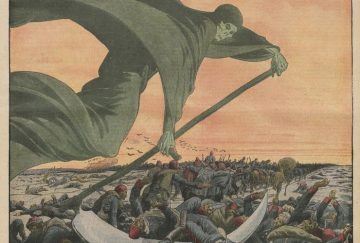 Alex de Waal in Boston Review:
Alex de Waal in Boston Review:
There is a saying among epidemiologists: “If you’ve seen one pandemic, you’ve seen one pandemic.” Echoing this trade wisdom in an interview two weeks ago, Bruce Aylward, the assistant director of the World Health Organization (WHO), pointed out that each new pandemic follows its own logic, and those who rely on past experiences to draw conclusions for public health will make mistakes. With each new pandemic it is tempting to scour history books for parallels and lessons learned. But as many have stressed, the wisdom to be gained is often greatly exaggerated.
Still, it is possible to steer a course between the Scylla of historical blindness and the Charybdis of hasty generalization. In her book about the era of the Black Death of 1348, A Distant Mirror (1978), the historian Barbara Tuchman confines her remarks on the present to a few oblique lines in the preface. “If one insists upon a lesson from history,” she writes, it is, as the French medievalist Edouard Perroy contended, that “Certain ways of behavior, certain reactions against fate, throw mutual light upon each other.” My working premise is that although the pathogen may be new, the logic of social response is not, and it is here that we can see historical continuities. An especially telling case study—still an object of fascination and controversy among historians of health and disease—is the devastating outbreak of cholera in Hamburg at the end of the nineteenth century, the subject of Richard Evans’s superbly researched book, Death in Hamburg (1987).
More here.
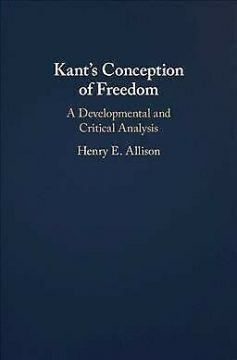 Over at NDPR, Allen Wood reviews Henry Allison’s Kant’s Conception of Freedom: A Developmental and Critical Analysis:
Over at NDPR, Allen Wood reviews Henry Allison’s Kant’s Conception of Freedom: A Developmental and Critical Analysis:
The title of this hefty book might easily mislead. The book is in effect a detailed survey of Kant’s entire philosophy, including even many Reflexionen from Kant’s Nachlass, as seen from the standpoint of one of its leading scholars of the past half century. It encompasses the development of Kant’s philosophy from Universal Natural History and Theory of the Heavens (1755) all the way to Religion within the Boundaries of Mere Reason (1793-94) and even Metaphysics of Morals (1798). The book’s ten chapters divide evenly between Kant’s writings before the Critique of Pure Reason (1781) and his writings after that. It is sometimes evident that Henry E. Allison is reading the early writings as preparatory to his interpretation of the works for which Kant is much better known. But since Allison himself thinks Kant’s mature views about freedom developed relatively late, and that the crucial turn came only between 1785 and 1788, it is hard to resist the conclusion that in the first 230 pages or so Allison is coming to terms with Kant’s early writings more as an end in itself rather than a means to understanding Kant’s later philosophy.
How can one review such a book? Many ostensible book reviews are really discussions of the topic of the book by someone other than the book’s author. Such reviews are sometimes interesting and informative, even if they are mainly a display of the reviewer’s thoughts. But I have always thought that the first duty of a review is to inform its readers about the contents of the book. Criticisms are valuable, if informed and economically argued, because you can learn something about a book’s contents by seeing how they might be challenged.
More here.
Grace Ebert at The Chicago Review of Books:
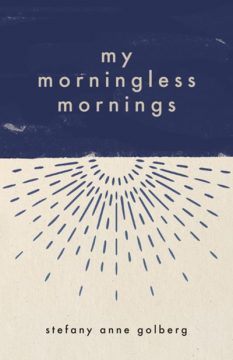 What makes My Morningless Mornings so notable, though, is not just the story of a ruminative young person who rejects the thrills associated with teenage life or even the early onset of her adulthood. Golberg’s work also functions as an abstract, winding, and rebellious consideration of the mundane qualities of the day’s earliest hours. Whereas the morning often is referred to as a beginning or a renewal of possibilities, Golberg instead asks her readers to consider it night’s ending and the conclusion of dream-induced wanderings and endless darkness.
What makes My Morningless Mornings so notable, though, is not just the story of a ruminative young person who rejects the thrills associated with teenage life or even the early onset of her adulthood. Golberg’s work also functions as an abstract, winding, and rebellious consideration of the mundane qualities of the day’s earliest hours. Whereas the morning often is referred to as a beginning or a renewal of possibilities, Golberg instead asks her readers to consider it night’s ending and the conclusion of dream-induced wanderings and endless darkness.
At times, the writer does describe waking to the sun’s first rays as a possibility, although even in these instances, she turns that same potential into doubt about her choices. Golberg tends to retreat into the understanding that while mornings may be inevitable, they’re not necessarily welcome.
more here.
https://www.youtube.com/watch?v=8C2ZtQlc4Nk&t=7484s
Michael Dirda at the Washington Post:
 Two of my favorite essays, by Seamus Perry and Sandra Mayer respectively, offer guided tours of W.H. Auden’s apartment at 77 St. Mark’s Place in New York, where the poet lived between 1954 and 1972, and his late-in-life Kirchstetten house in Austria. Auden famously united minimum attention to his living conditions with maximum regard for routine and order. He wore the same suit day after day, padded around Manhattan in carpet slippers and utilized his kitchen sink as a toilet. Composer Igor Stravinsky called him “the dirtiest man I have ever liked.” Relying on literary journalism to pay his bills, Auden toiled at his desk every day from 9 a.m. till 4 or 5 p.m., then enjoyed a massive cocktail or two, sat down to a well prepared dinner promptly at 6 and toddled off to bed as early as 9:00, sometimes shooing guests out the door. In Austria, the poet acquired a yellow Volkswagen, eventually used as the getaway car in a series of robberies committed by a longtime lover.
Two of my favorite essays, by Seamus Perry and Sandra Mayer respectively, offer guided tours of W.H. Auden’s apartment at 77 St. Mark’s Place in New York, where the poet lived between 1954 and 1972, and his late-in-life Kirchstetten house in Austria. Auden famously united minimum attention to his living conditions with maximum regard for routine and order. He wore the same suit day after day, padded around Manhattan in carpet slippers and utilized his kitchen sink as a toilet. Composer Igor Stravinsky called him “the dirtiest man I have ever liked.” Relying on literary journalism to pay his bills, Auden toiled at his desk every day from 9 a.m. till 4 or 5 p.m., then enjoyed a massive cocktail or two, sat down to a well prepared dinner promptly at 6 and toddled off to bed as early as 9:00, sometimes shooing guests out the door. In Austria, the poet acquired a yellow Volkswagen, eventually used as the getaway car in a series of robberies committed by a longtime lover.
more here.
what I like about Jesus
are his faded feet
and those of his companions
— thirteen haloes –
on the abandoned icons
of the small Bulgarian Mount Athos
I’m not talking about the fig tree
— the fig tree Jesus illuminates—
nor of the cascade of rocks
— more like the Grand Canyon than Galilee—
Jesus’ delicately faded feet
made me think of the rock paintings
of Tassili
there is no foot as finely
traced on Hoggar’s boulders
they are long slender figures
suspended
exactly like the Christ
suspended fixed and dynamic at once
it’s a lightning bolt
an allusion stripped of logic
or so it seems
you find what you find
above all when it’s different from what you see
what I like about the astrophysicist
are his premonitions
when he says perhaps
when he says that statistics
have altered physics
fixed it in place
emptied
disembodied
when he says that matter
isn’t matter
that time and space
are heresy
that we humans
take ourselves too seriously
thinking ourselves fragile
inventing ourselves powerful
that we invent landmarks
that we forget having invented them
that we must relinquish control
when he says perhaps
give your doubt back its soul
by Samira Negrouche
from: Six arbres de fortune autour de ma baignoire
publisher: Mazette, Paris, 2017
translation: 2020, Marilyn Hacker
.
Original French after “Read More”
Charles Glass (Former Hostage) in MIL:
 The window was sealed behind a sheet of solid steel. The door was locked. Thick chains bound one arm and one ankle. The room was bare apart from a thin foam mat for a bed and a plastic bottle to pee into. I was alone. That was the summer of 1987, when Hizbullah was holding me hostage in Lebanon. They had many other hostages, but I didn’t see them. In fact, I saw no one. When a guard came into the room, I had to put on a blindfold so that I couldn’t identify him. The only conversations I had were a few interrogations, when I was also blindfolded. The questioning involved threats and verbal abuse, but mercifully no torture. As unpleasant as they were, they broke the monotony. The rest of the time left me thinking, remembering, imagining. One way of relieving the loneliness was to pretend that one or another of my children was with me, each on a different day. I made chess pieces out of paper labels on water bottles to play with each one. Sometimes I let them win, or they beat me outright.
The window was sealed behind a sheet of solid steel. The door was locked. Thick chains bound one arm and one ankle. The room was bare apart from a thin foam mat for a bed and a plastic bottle to pee into. I was alone. That was the summer of 1987, when Hizbullah was holding me hostage in Lebanon. They had many other hostages, but I didn’t see them. In fact, I saw no one. When a guard came into the room, I had to put on a blindfold so that I couldn’t identify him. The only conversations I had were a few interrogations, when I was also blindfolded. The questioning involved threats and verbal abuse, but mercifully no torture. As unpleasant as they were, they broke the monotony. The rest of the time left me thinking, remembering, imagining. One way of relieving the loneliness was to pretend that one or another of my children was with me, each on a different day. I made chess pieces out of paper labels on water bottles to play with each one. Sometimes I let them win, or they beat me outright.
Although I never saw daylight, I was acutely aware of time. Every morning when I woke, I reminded myself of the date and thought, “This is day ten (or whatever other number it happened to be) of my captivity – and my last.” The only idea that sustained my morale was that somehow I would escape. After 62 days, I did.
Now, there is no escape. Where would I go? Most of the planet is locked down. I knew in Beirut that if I got out, I would return to the world I left behind. London loomed as a safe haven to be reached at any cost. But I was spending this year in the beautiful resort-cum-fishing-village of Porto Ercole on the Tuscan shore in Italy, working on a book and planning trips to London and Islamabad. So when the Italian government put us in quarantine, like the rest of the country, I was trapped. And, as when I was a hostage in Beirut, I’m on my own. The regime here is better than it was when I was being held by Hizbullah. I was given so little food I lost 25 pounds. Now I’ll probably gain weight from the pasta and meat I’m cooking. I considered myself lucky in Beirut to have water to drink, but here I’m well stocked with red Chianti from the famed vineyards of Castello Sonnino. I also got five-litre tins of olive oil from the same source, which I now pour generously on my burrata.
More here.
Rafia Zakaria in The New York Times:
 Thomas Roe, Britain’s envoy in India during the 1620s, wrote of Empress Nur Jehan’s power over her husband, the Mughal emperor Jehangir, that she “governs him, and wynds him up at her pleasure.”
Thomas Roe, Britain’s envoy in India during the 1620s, wrote of Empress Nur Jehan’s power over her husband, the Mughal emperor Jehangir, that she “governs him, and wynds him up at her pleasure.”
The story of Nur Jehan, who was born to migrant parents and rose to a position where she unofficially ruled jointly with her husband, is just one of the intriguing tales that make up Hossein Kamaly’s eminently readable collection “A History of Islam in 21 Women.” Besides Nur Jehan, we hear of the Prophet Muhammad’s wife Khadija, who saw the promise of an orphaned young man and was the first to accept Islam, and the Sufi ascetic Rabia Al-Adawiyya, who insisted that women were the spiritual equals of men. Later on came the Yemeni queen Arwa, who ruled for seven decades and even issued coinage in her own name, and also Noor Inayat Khan, the Sufi-Muslim British spy who went into Nazi-occupied France to radio enemy movements back to Britain.
Indeed, the Muslim women recounted by Kamaly (who teaches Islamic studies at Hartford Seminary) are a feisty and intrepid bunch. Collectively, they constitute a foil against the persistent myth that Muslim women are simpering sorts awaiting rescue. This Western “rescue” fantasy and the would-be saviors it creates were duly debunked by the Columbia professor Lila Abu-Lughod in her book “Do Muslim Women Need Saving?” But while Abu-Lughod’s work provides a theoretical critique of Western insouciance and obstinacy in holding on to the myth of Muslim helplessness, Kamaly’s book hands up the lived examples. Here in all their gutsy glory are women whose voices have not received the prominence that is their due within the story of Islam.
More here.
Ron Rosenbaum at Lapham’s Quarterly:
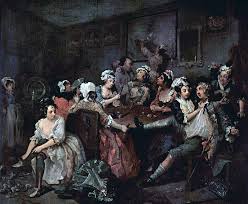 What sets aside mere tabloid news from a more revelatory scandal that says something about human nature? On this point, I defer to a lesson learned from a wise editor. I had been doing a story for the pioneering journalism-criticism magazine More on a terrific character, New York icon Pat Doyle, homicide reporter for the tabloid Daily News.
What sets aside mere tabloid news from a more revelatory scandal that says something about human nature? On this point, I defer to a lesson learned from a wise editor. I had been doing a story for the pioneering journalism-criticism magazine More on a terrific character, New York icon Pat Doyle, homicide reporter for the tabloid Daily News.
Doyle liked to boast that he had covered some ten thousand murders over the course of his career. He was a much admired Irish wise-guy type with a taste for beer and stoicism. He loved to hang out in the fabled middle room of P.J. Clarke’s Third Avenue saloon and former speakeasy. He knew everybody and was not intimidated by anybody, because he was acutely aware we were all going to die, by homicide or not.
more here.
Seamus Perry at Literary Review:
 To Jonathan Bate, Wordsworth matters principally as a prophet of nature. This may sound like what Basil Fawlty used to call a statement of the bleeding obvious. But in fact, since the Second World War scholars have more often thought about him in other terms: politically, or as a writer about psychological development, or as a central member of the ‘visionary company’ of English Romantics, the watchword for whom was not ‘Nature’ so much as ‘Imagination’. The return of nature to Wordsworthian commentary is a corollary of the environmentalist spirit of the age. The process was largely initiated by Bate himself in a book called Romantic Ecology (1991). This new book resumes the theme, providing a colourfully written celebration (one chapter is entitled ‘Lucy in the Harz with Dorothy’) of Wordsworth’s ‘radical alternative religion of nature’.
To Jonathan Bate, Wordsworth matters principally as a prophet of nature. This may sound like what Basil Fawlty used to call a statement of the bleeding obvious. But in fact, since the Second World War scholars have more often thought about him in other terms: politically, or as a writer about psychological development, or as a central member of the ‘visionary company’ of English Romantics, the watchword for whom was not ‘Nature’ so much as ‘Imagination’. The return of nature to Wordsworthian commentary is a corollary of the environmentalist spirit of the age. The process was largely initiated by Bate himself in a book called Romantic Ecology (1991). This new book resumes the theme, providing a colourfully written celebration (one chapter is entitled ‘Lucy in the Harz with Dorothy’) of Wordsworth’s ‘radical alternative religion of nature’.
more here.
John Gray in New Statesman:
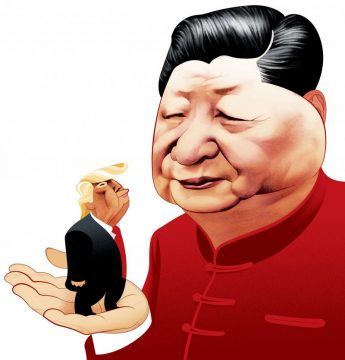 The deserted streets will fill again, and we will leave our screen-lit burrows blinking with relief. But the world will be different from how we imagined it in what we thought were normal times. This is not a temporary rupture in an otherwise stable equilibrium: the crisis through which we are living is a turning point in history. The era of peak globalisation is over. An economic system that relied on worldwide production and long supply chains is morphing into one that will be less interconnected. A way of life driven by unceasing mobility is shuddering to a stop. Our lives are going to be more physically constrained and more virtual than they were. A more fragmented world is coming into being that in some ways may be more resilient.
The deserted streets will fill again, and we will leave our screen-lit burrows blinking with relief. But the world will be different from how we imagined it in what we thought were normal times. This is not a temporary rupture in an otherwise stable equilibrium: the crisis through which we are living is a turning point in history. The era of peak globalisation is over. An economic system that relied on worldwide production and long supply chains is morphing into one that will be less interconnected. A way of life driven by unceasing mobility is shuddering to a stop. Our lives are going to be more physically constrained and more virtual than they were. A more fragmented world is coming into being that in some ways may be more resilient.
The once formidable British state is being rapidly reinvented, and on a scale not seen before. Acting with emergency powers authorised by parliament, the government has tossed economic orthodoxy to the winds. Savaged by years of imbecilic austerity, the NHS – like the armed forces, police, prisons, fire service, care workers and cleaners – has its back to the wall. But with the noble dedication of its workers, the virus will be held at bay. Our political system will survive intact. Not many countries will be so fortunate. Governments everywhere are struggling through the narrow passage between suppressing the virus and crashing the economy. Many will stumble and fall.
…With all its talk of freedom and choice, liberalism was in practice the experiment of dissolving traditional sources of social cohesion and political legitimacy and replacing them with the promise of rising material living standards. This experiment has now run its course. Suppressing the virus necessitates an economic shutdown that can only be temporary, but when the economy restarts, it will be in a world where governments act to curb the global market.
More here.
Gerald Howard in Bookforum:
 Do you find it as obvious as I do that Don DeLillo richly deserves to receive the Nobel Prize in Literature? And right away, as in this year?
Do you find it as obvious as I do that Don DeLillo richly deserves to receive the Nobel Prize in Literature? And right away, as in this year?
The inner workings of the Swedish Academy are opaque, but the one thing everybody knows is that their record of choices for the literature prize is spotty at best and in some cases purblind and scandalous (see: Peter Handke). Their sins of commission—when is the last time anyone said or wrote anything about the laureates Rudolf Eucken, Carl Spitteler, Frans Eemil Sillanpää, Pearl S. Buck, Nelly Sachs, or Dario Fo?—are exceeded only by their sins of omission. Writers the Academy have passed over include Leo Tolstoy, Henry James, Edith Wharton, Henrik Ibsen, Virginia Woolf, James Joyce, Jorge Luis Borges, Graham Greene, Vladimir Nabokov, and, most recently and conspicuously, Philip Roth.
Nevertheless the Nobel continues to exceed the Booker, the Pulitzer, and all other literary awards in its prestige, global impact, and ability to tip the scales toward immortality.
More here.
John Horgan in Scientific American:
 Philip W. Anderson speaks in a slow, deliberate growl, pausing between sentences to ponder his next move. His basal expression, too, is deadpan. But like some exotic ceramic in an unstable state, Anderson’s mood can flip in an instant between different modes.
Philip W. Anderson speaks in a slow, deliberate growl, pausing between sentences to ponder his next move. His basal expression, too, is deadpan. But like some exotic ceramic in an unstable state, Anderson’s mood can flip in an instant between different modes.
Discussing a conference he just attended, the Nobel laureate and professor of physics at Princeton University recalls a session on cancer with obvious delight. The talks left him marveling at the “layers upon layers upon layers” of error-correction mechanisms that enable genes to replicate with scarcely a mistake. Researchers, he exults, will have to discover profound new principles to account for this phenomenon.
On the other hand, a session on his own specialty, high-temperature superconductors, was “horrible.” Anderson accuses researchers of “looking under the streetlight” instead of venturing away from known territory for solutions to their problems.
More here.